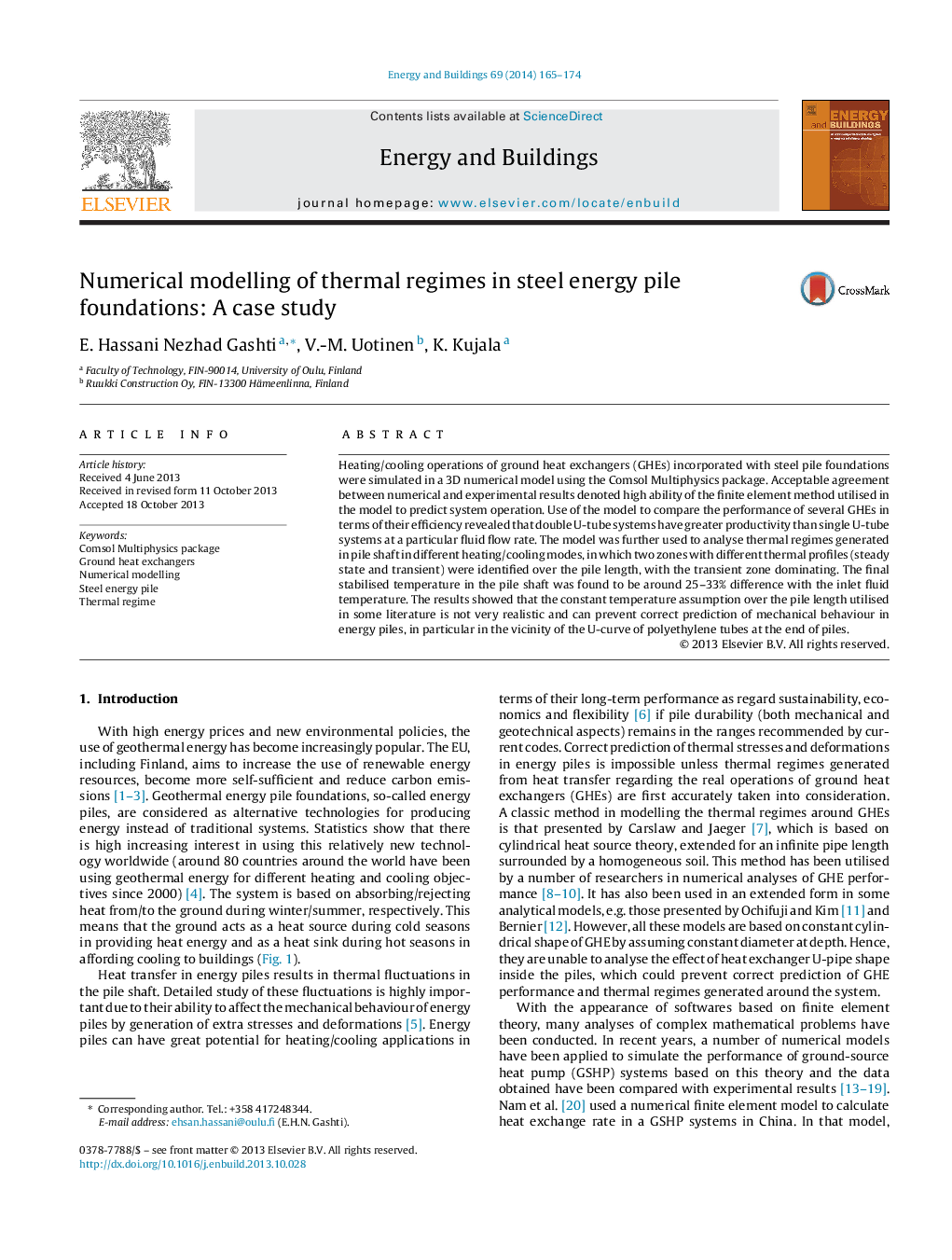| Article ID | Journal | Published Year | Pages | File Type |
|---|---|---|---|---|
| 263140 | Energy and Buildings | 2014 | 10 Pages |
•A validated numerical model in thermal simulation of steel energy piles.•Output power evaluation of different U-tube configurations over different modes.•Cost-effective assessment between different U-tube systems.•Temperature variation analysis over vertical and horizontal axes of pile.
Heating/cooling operations of ground heat exchangers (GHEs) incorporated with steel pile foundations were simulated in a 3D numerical model using the Comsol Multiphysics package. Acceptable agreement between numerical and experimental results denoted high ability of the finite element method utilised in the model to predict system operation. Use of the model to compare the performance of several GHEs in terms of their efficiency revealed that double U-tube systems have greater productivity than single U-tube systems at a particular fluid flow rate. The model was further used to analyse thermal regimes generated in pile shaft in different heating/cooling modes, in which two zones with different thermal profiles (steady state and transient) were identified over the pile length, with the transient zone dominating. The final stabilised temperature in the pile shaft was found to be around 25–33% difference with the inlet fluid temperature. The results showed that the constant temperature assumption over the pile length utilised in some literature is not very realistic and can prevent correct prediction of mechanical behaviour in energy piles, in particular in the vicinity of the U-curve of polyethylene tubes at the end of piles.
